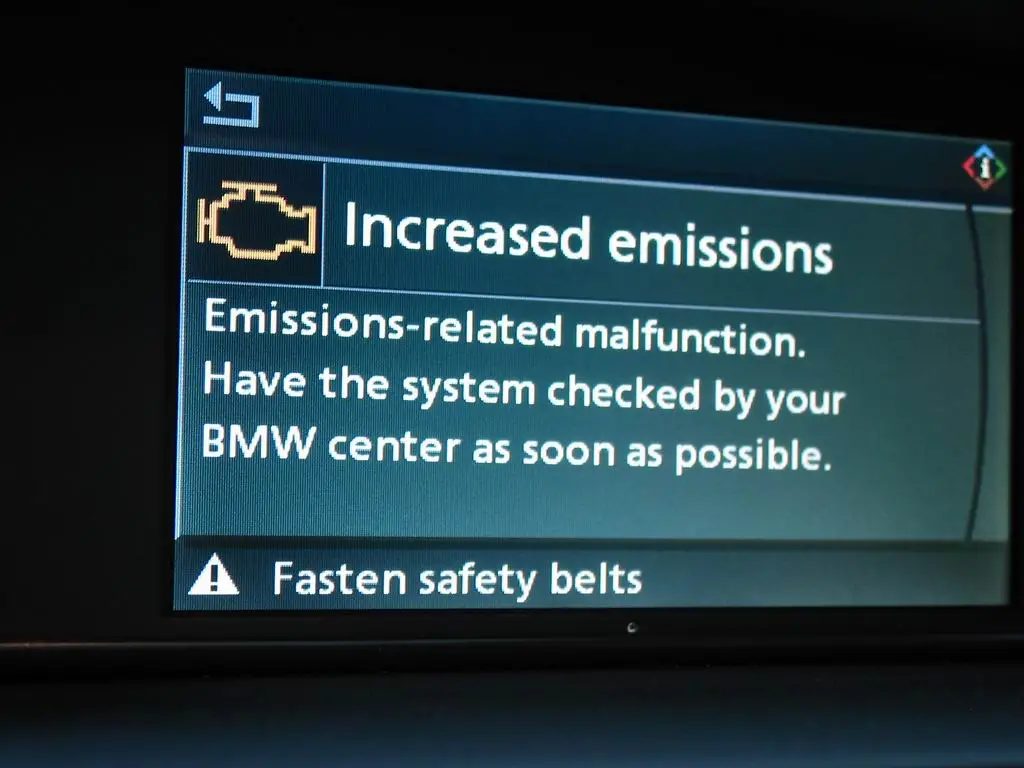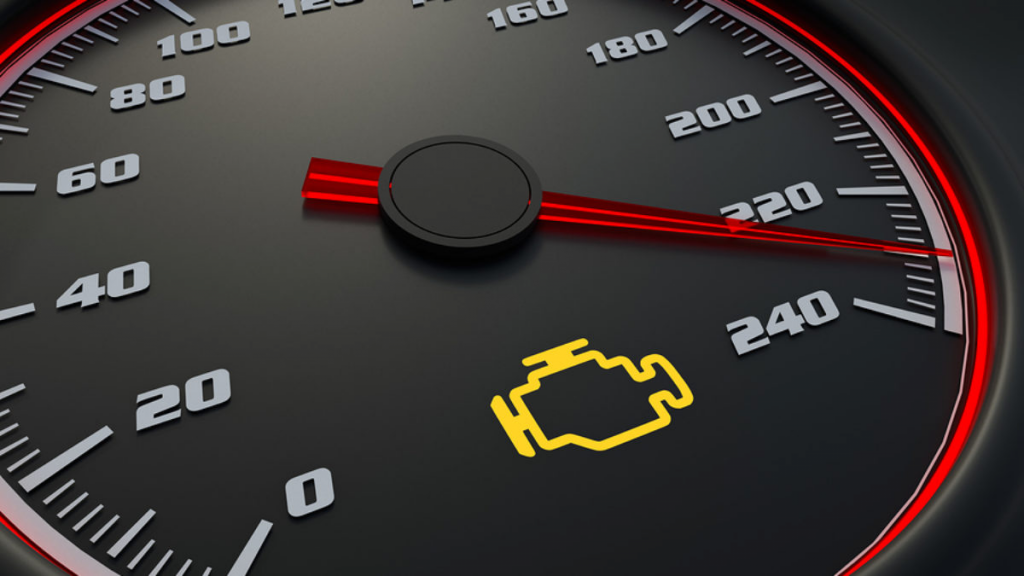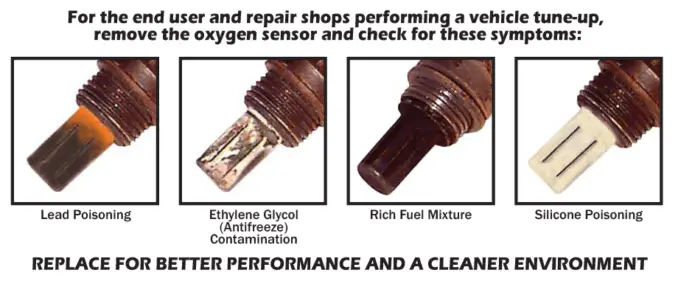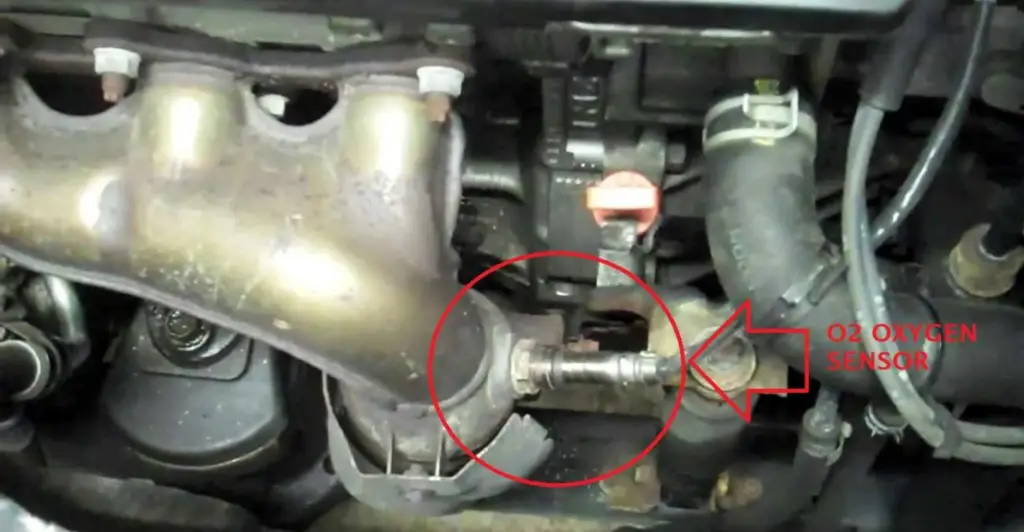It’s a bit concerning when there’s a flashing light in your car. This becomes a headache if it specifically says “Check Engine”. You might even start panicking if there is an “Increased Emission” sign flashing in your iDrive.
So, what does increased emission mean on a BMW?
Increased emission on a BMW means that there’s an issue with the car’s emission system. It means your car’s exhaust is producing more harmful gasses than it should.
The symptoms are that it shows the “check engine” sign and spreads a gasoline smell. Besides, it increases gas consumption.
I’ve elaborated on these symptoms and reasons throughout this entire article. It’ll surely be helpful for you.
Increased Emission on a BMW
Your car could suddenly be releasing too much CO2 through its exhaust. This increases the amount of CO2 in the environment, causing pollution.
This release of CO2 or other harmful gasses in the environment is expressed as increased emissions. There is a standard limit for the amount of harmful gas a BMW should emit.
If the limit is crossed then your BMW will show you the increased emission sign.

Emission control systems, also known as EVAP systems, are built into vehicles to reduce carbon emissions.
It reduces the release of excess unburned gasses released in the environment. This technology has been quite effective in lowering the amount of pollution created by vehicles.
Your BMW’s emission system allows the engine to operate smoothly. It is essential that almost all of the elements function properly. Your car will emit dangerous fumes if any component starts to malfunction.
Several states have strict regulations on car emissions. Considering emissions are chemicals that are dangerous to health and the climate.
Here are by far the most frequent reasons for excessive car emissions. And you should be aware of maintaining your vehicle as environmentally friendly as possible!
Symptoms of Increased Emissions on a BMW
The question is how will you know that you’re facing BMW increased emission problems? Well, there are actually quite a few ways that you can identify if you’re facing this problem. Here’s how:
The “Check Engine” Light Appears
This is the very first thing you’ll notice if you face increased emission problems. It’s like a BMW increased emissions warning.
Check engine light appears on the dashboard when you face increased emissions. But the problem is, the check engine sign could lighten up for other reasons too.

So, it’s recommended to take the car to the diagnostics if the check engine sign pops up.
Increased Gas Consumptions
Increased emissions occur because of emission control system problems (ECS).
Your car’s emissions system has an impact on fuel efficiency. So if your car is unexpectedly consuming too much gas then you may have ECS problems.
Although excess gas consumption can be caused because of other reasons too. Hence, you should seek the help of a professional to identify it.
Spreads Gasoline Smell
If you smell gasoline on the inside or outside of the car consider this as dangerous. This is an indication of a malfunctioning emission control system.
If you can smell the gasoline then you can identify that this is an increased emission problem.
Reasons Why Your BMW Faces Increased Emission Problems
Now our next concern is what causes increased emissions on BMW? Although there are different models of BMW, the reasons are quite similar.
The reasons for the BMW 320d’s increased emissions and the increased emissions on the BMW x5 are the same. It’s also similar to increased emissions on the BMW e60.
Reason 1: Faulty Oxygen Sensor
The oxygen sensor is among the most significant sensors in modern vehicles. The oxygen sensor calculates the quantity of flammable oxygen in the emissions as it exits the engine.
A defective oxygen sensor could fail to detect the oxygen in your emissions correctly. This will lower the quality and quantity of your vehicle’s emissions. If you don’t exactly know how a defective oxygen sensor looks, check for these visible cues.

This could result in increased emissions in your BMW.
Solution: Replace the Defective Oxygen Sensor
Sometimes the oxygen sensor could get damaged because of various reasons. Even a bad catalytic converter causes Oxygen sensor failure.
To solve this problem you’re gonna have to replace the faulty oxygen sensor. Here’s how to do it step-by-step:
- Buy a new oxygen cable sensor. You can try Denso 234-4337 Oxygen Sensor.
No products found.
- Open the hood of your BMW and unscrew the air cap filter.
- Unclip the wiring harness and pull it out then pull out the engine cover.
- Locate the oxygen sensor. It’s usually a gray wire located between cylinders 4,5 and 6.

- Disconnect the connector of the oxygen sensor. Then detach the sensor from the metal plate it’s connected to.
- Pull out the sensor cable and attach the new oxygen sensor cable to the metal plate.
- Connect the sensor and then you’re good to reassemble the other parts.
Reason 2: Faulty Fuel Injector
Increased emissions can be caused by a faulty fuel injector. This affects the balance between the amount of air and fuel in the engine. This causes gas to come out of the exhaust.
A clogged injector fails to distribute fuel as it should. As a result, the fuel-air mix in the combustion chamber is disrupted.
Thus, some gasoline isn’t burned off. This results in additional harmful emissions being released into the atmosphere.
Solution: Clean or Replace the Fuel Injector
Now, this part can be a little tricky. When you have a clogged fuel injector usually you don’t need to replace it. But sometimes the injectors are damaged beyond repair. In that case, you’re gonna have to replace it.
Before all that you’ll need to take out your fuel injector to inspect it. Let’s see how you’re going to take out your fuel injector:
- Open the hood of your BMW and unscrew the air cap filter.
- Then unclip the wiring harness and pull it out. And pull out the engine cover.
- Take the fuel line fuse out from behind the glove compartment.
- Carefully disconnect the fuel line. And take out the springs that connect the fuel rail to the wiring harness.
- Disconnect the fuel rail from the wiring harness. Then you’ll find your fuel injectors under the fuel rail.
- The fuel injector is connected to the rail with a metal bracket.
- Take out the metal bracket. Then just wiggle and pull out the fuel injector.
- Take out all 6 fuel injectors in the same way.
Now once you’ve pulled out the injectors, you need to see if it’s damaged critically. If the injectors are damaged beyond repair then replace them with new ones.
It’s better if you get the one that you have already. So try to contact your dealer or your go-to mechanic.
But if the injectors are just clogged you’re going to need to unclog the fuel injector.
After unclogging it you can reassemble the parts and you’re good to go. If you’re searching for some good quality fuel injector cleaner you can try out the following ones.
No products found.
Reason 3: Loose or Defective Oil Tank Cap
An oil tank cap could also be the reason why you’re having increased emission problems. A gas cap prevents oil and fumes from leaking from the tank. This cap has an automated tightening mechanism.
If the cap is not sealed tightly it could show the check engine sign. And it will show increased emissions. Similarly, a defective oil tank cap could show the same problem.
Solution: Tighten or Replace the Oil Tank Cap
See this is a fairly easy solution. You don’t need much knowledge about cars to solve this problem.
You just need to know the symptoms of a failing fuel filler cap. If it’s not tightened then turn off your engine and tighten it properly.
This should do the trick. If it doesn’t it means the cap is defective. If that’s the case you’re gonna have to replace the cap with a new one.
Frequently Asked Questions
Can a bad mass air flow sensor cause increased emissions?
Yes, a bad mass air flow sensor can cause increased emissions. Mass Air Flow Sensor calculates the amount of fuel that should be utilized at any given time. A malfunctioning sensor might result in the usage of too much gasoline. This will result in the production of higher carbon monoxide.
Can a Faulty Catalytic Converter cause emission problems?
Yes, a Faulty Catalytic Converter can cause emission problems. A faulty catalytic converter is very harmful. It will stop the car from converting harmful gasses into environmentally friendly ones. This will harm both the car and the environment. Thus causing increased emissions.
Can a defective spark plug turn cause increased emission?
Yes, defective spark plugs can cause increased emissions. Spark plug failure could lead to higher fuel usage. This will most likely result in incomplete combustion. As a result, increased emissions will occur. Because of defective spark plugs, the check engine sign could also lighten up.
Endnote
Hopefully, by now you know what does increased emissions mean on a BMW.
A bonus tip for you is to conduct regular servicing of your car. That’ll help your car to run smoothly for longer.
That’ll be all. Catch you later!
- Is The Jeep Cherokee Frame or Unibody (Briefly Answered) - November 10, 2022
- Are Titan Wheel Spacers Good (The 360 Guidelines) - November 9, 2022
- FCW off Jeep (Is It Important for Your Car) - November 9, 2022
